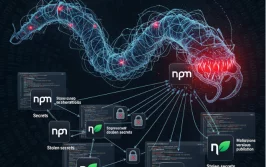In today’s rapidly evolving software development landscape, security and compliance have become paramount. As organizations increasingly rely on third-party components and open-source software, understanding what’s inside your software has never been more critical. Enter the Software Bill of Materials (SBOM)—a detailed list of all components, libraries, and dependencies that make up your software. Integrating SBOMs throughout the Software Development Life Cycle (SDLC) is essential for enhancing security, ensuring compliance, and fostering transparency.
This comprehensive guide explores how to effectively integrate SBOMs across the entire SDLC, highlighting the steps, benefits, challenges, and strategies for success.
Understanding SBOMs and Their Importance
An SBOM is akin to a nutritional label for software, listing all the components that constitute a software product. It includes information about the software’s dependencies, libraries, modules, and even the licenses governing them.
Why SBOMs Matter:
- Transparency: Provides visibility into software components, reducing the risk of hidden vulnerabilities.
- Security: Helps identify and mitigate security risks associated with third-party components.
- Compliance: Ensures adherence to licensing requirements and regulatory standards.
- Risk Management: Facilitates proactive management of potential threats and vulnerabilities.
Different Types of SBOMs and Their Roles
Understanding the different types of SBOMs is crucial for effective integration across the SDLC. Each type serves a specific purpose and offers unique insights into the software’s composition.
Design-Time SBOM
- Definition: Generated during the design phase, it outlines the planned components and dependencies.
- Purpose: Helps in assessing potential risks and compliance issues before implementation begins.
- Importance: Allows teams to make informed decisions about component selection and architecture.
Source SBOM
- Definition: Derived from the source code repository, detailing the components and dependencies as defined in the codebase.
- Purpose: Helps in tracking changes over time and understanding the evolution of the software’s composition.
- Importance: Useful for audits, compliance checks, and historical analysis.
Build-Time SBOM
- Definition: Created during the build process, capturing all components and dependencies included in the compiled software.
- Purpose: Provides an accurate snapshot of the software’s composition at the time of build.
- Importance: Essential for verifying that only approved components are included and for detecting any unauthorized additions.
Runtime SBOM
- Definition: Reflects the components and dependencies that are actually in use during software execution.
- Purpose: Identifies discrepancies between build-time components and those loaded at runtime.
- Importance: Critical for detecting dynamic dependencies or injected code that may introduce vulnerabilities.
Binary SBOM
- Definition: Generated from the compiled binaries, often using reverse-engineering tools.
- Purpose: Validates the actual contents of the software delivered, independent of source code.
- Importance: Ensures that the delivered software matches expectations, crucial for third-party or closed-source components.
Why Multiple SBOM Types Matter
Using different SBOM types from various stages of the development lifecycle enhances security and compliance by:
- Comprehensive Coverage: Captures component information at every stage, reducing blind spots.
- Discrepancy Detection: Identifies inconsistencies between planned, built, and deployed components.
- Enhanced Traceability: Facilitates tracking of components from design to deployment.
- Improved Risk Management: Allows for early detection and mitigation of vulnerabilities
Stages of the SDLC and SBOM Integration
Integrating SBOMs at each stage of the SDLC ensures that security and compliance are baked into the software from the ground up.
Planning and Requirement Analysis
Integration Steps:
- Define Security Requirements: Establish security and compliance goals, including SBOM generation and management.
- Stakeholder Engagement: Involve security teams, developers, and compliance officers to align on SBOM practices.
Benefits:
- Sets a clear roadmap for security expectations.
- Aligns all teams on the importance of SBOMs.
Design
Integration Steps:
- Architectural Planning: Design the software with SBOM generation in mind.
- Tool Selection: Choose tools that support SBOM creation and management.
Benefits:
- Ensures the software architecture supports SBOM integration.
- Facilitates smoother implementation of security measures.
Implementation (Coding)
Integration Steps:
- Automated SBOM Generation: Integrate tools that automatically generate SBOMs during the build process.
- Component Verification: Validate all components and dependencies against known vulnerability databases.
Benefits:
- Reduces manual effort in SBOM creation.
- Identifies vulnerabilities early in the development process.
Testing
Integration Steps:
- SBOM Validation: Test the SBOM for accuracy and completeness.
- Security Testing: Use the SBOM to perform vulnerability and license compliance testing.
Benefits:
- Ensures the SBOM reflects the actual software components.
- Enhances the effectiveness of security testing.
Deployment
Integration Steps:
- SBOM Distribution: Include the SBOM with the software deliverables.
- Customer Communication: Inform end-users about the SBOM and its benefits.
Benefits:
- Promotes transparency with customers.
- Facilitates compliance with regulatory requirements.
Maintenance
Integration Steps:
- SBOM Updates: Regularly update the SBOM to reflect changes in the software.
- Ongoing Monitoring: Use the SBOM for continuous vulnerability assessment.
Benefits:
- Keeps security measures up-to-date.
- Helps in quick response to newly discovered vulnerabilities.
Benefits of Integrating SBOMs Across the SDLC
- Enhanced Security: Early detection of vulnerabilities reduces the risk of security breaches.
- Regulatory Compliance: Meets the requirements of regulations like the Executive Order on Improving the Nation’s Cybersecurity.
- Improved Quality: Leads to better software quality through thorough component analysis.
- Cost Savings: Reduces costs associated with late-stage vulnerability fixes and compliance issues.
- Customer Trust: Builds confidence with clients by demonstrating a commitment to security and transparency.
Challenges in SBOM Integration
- Tool Compatibility: Integrating SBOM tools with existing development environments can be challenging.
- Complexity: Managing SBOMs for large projects with numerous dependencies is complex.
- Team Buy-in: Getting all stakeholders to adopt SBOM practices requires cultural change.
- Data Management: Ensuring the SBOM data is accurate, secure, and up-to-date.
Strategies for Effective SBOM Integration
- Automate Processes: Use automation tools for SBOM generation and management to reduce manual effort.
- Educate Teams: Provide training and resources to developers and security teams on SBOM importance and usage.
- Standardize Practices: Adopt industry standards like CyclonDX or SPDX (Software Package Data Exchange) for SBOM formats.
- Collaborate with Vendors: Work closely with tool vendors to ensure seamless integration and support.
- Policy Development: Establish organizational policies that mandate SBOM integration at each SDLC stage.
Enhancing Security and Compliance
Integrating SBOMs enhances security and compliance by:
- Proactive Vulnerability Management: Identifies vulnerabilities in components before they are exploited.
- License Compliance: Ensures all software components comply with licensing agreements, reducing legal risks.
- Audit Readiness: Simplifies the audit process by providing detailed component information.
How Scribe Security Facilitates SBOM Integration
Scribe Security offers a comprehensive solution that streamlines SBOM integration across the entire SDLC, addressing many of the challenges organizations face.
Automated SBOM Generation
Scribe Security’s platform automates the creation of SBOMs at every stage of the SDLC — from your Git, during the build process, from the final image, and in the admission controller just before deployment. Scribe also ingests 3rd party SBOMs or scans 3rd party code to generate and SBOM (e.g. open source packages or images you receive from your 3rd party software vendors or free lancers developers). This ensures that every software iteration is accompanied by an up-to-date SBOM without additional manual effort.
Key Features:
- Seamless Integration: Easily integrates with popular CI/CD pipelines and development tools.
- Real-Time Updates: Automatically updates SBOMs as new components are added or changed.
Advanced Vulnerability Management
By leveraging a vast database of known vulnerabilities, Scribe Security helps organizations identify and remediate security risks associated with their software components.
Key Features:
- Continuous Monitoring: Provides real-time alerts for newly discovered vulnerabilities in existing components.
- Risk Prioritization: Assesses and prioritizes vulnerabilities based on severity and impact.
Compliance and License Management
Scribe Security simplifies compliance with licensing requirements and regulatory standards by providing detailed information about component licenses.
Key Features:
- License Detection: Automatically identifies licenses associated with each component.
- Compliance Reporting: Generates reports to demonstrate compliance with legal and regulatory standards.
Collaboration and Reporting
Facilitates collaboration between development, security, and compliance teams by providing a centralized platform for SBOM management.
Key Features:
- Customizable Dashboards: Offers insights and analytics tailored to different stakeholders.
- Exportable Reports: Allows easy sharing of SBOM data and compliance reports with auditors and clients.
Enhanced Security Posture
By integrating Scribe Security into your SDLC, you not only streamline SBOM management but also enhance your overall security posture.
Key Benefits:
- Reduced Risk: Early detection and remediation of vulnerabilities reduce the likelihood of security incidents.
- Cost Efficiency: Automating SBOM processes lowers operational costs and minimizes resource expenditure.
- Scalability: Suitable for projects of all sizes, from small applications to large enterprise systems.
Summary
Integrating SBOMs across the entire SDLC is no longer optional—it’s a necessity for organizations aiming to enhance security, ensure compliance, and build trust with their customers. While challenges exist, they can be effectively managed through automation, education, and the adoption of robust tools.
Scribe Security stands out as a comprehensive solution that addresses these challenges head-on. By automating SBOM generation, enhancing vulnerability management, and simplifying compliance, Scribe Security enables organizations to seamlessly integrate SBOMs into their SDLC.
Take the Next Step:
- Assess Your Current Processes: Identify gaps in your SBOM integration and areas for improvement.
- Leverage Scribe Security: Consider incorporating Scribe Security into your SDLC to enhance security and compliance.
- Stay Informed: Keep up-to-date with the latest developments in SBOM standards and best practices.
Embrace the future of secure software development by integrating SBOMs across your SDLC with the help of Scribe Security.
This content is brought to you by Scribe Security, a leading end-to-end software supply chain security solution provider – delivering state-of-the-art security to code artifacts and code development and delivery processes throughout the software supply chains. Learn more.



